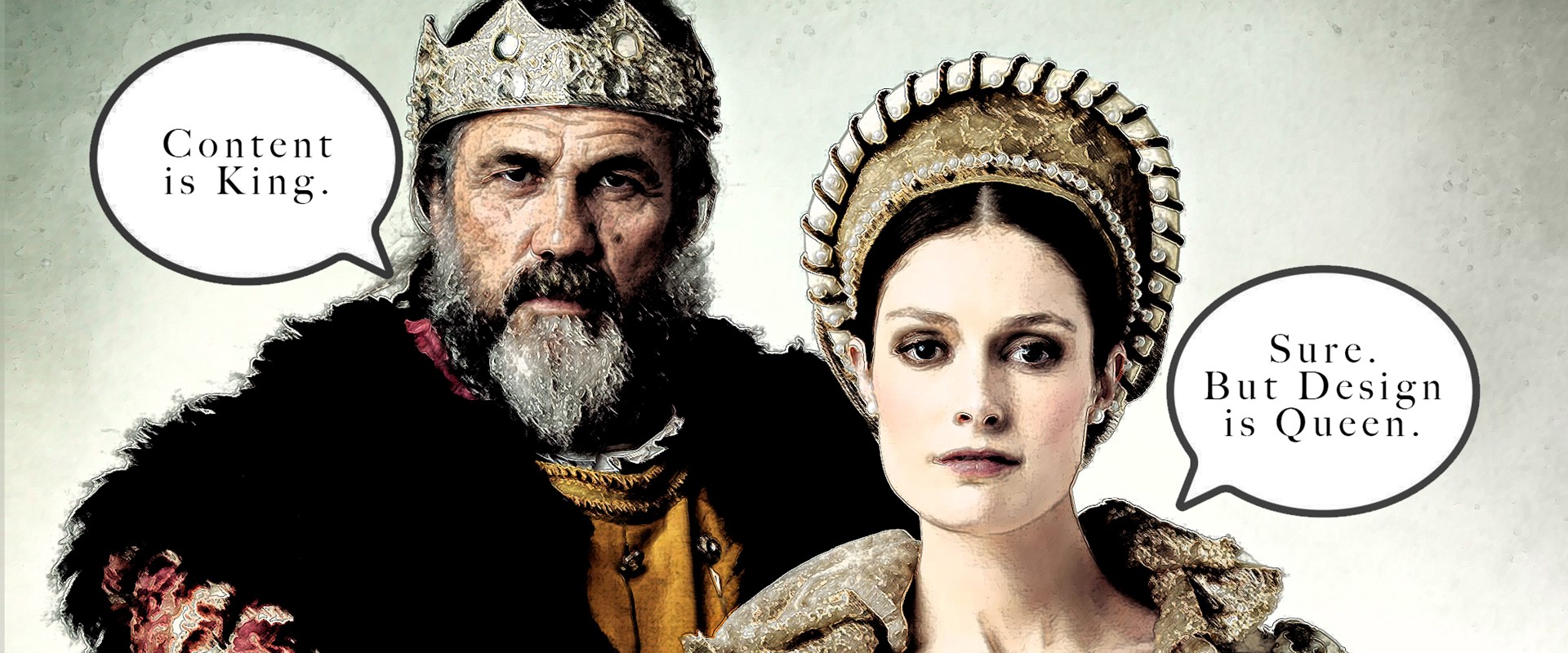Everybody knows that when it comes to marketing strategies “content is king” and if you don’t, you should because we’ve blogged about it many, many times - take a look through the archive. Apparently it was one Bill Gates who really brought the phrase to a mass audience when he published an essay entitled “content is king” on the Microsoft website way back in 1996.
It’s an expression used all the time by marketers and it’s all about the basic principle that publishing valuable content, such as useful insights or interesting and successful stories, generates more interest than pure sales pitches. Which stands to reason as no one really likes to be sold to, but people really like stories - well, they like good stories.
What makes a good story? First of all a good story needs to be relevant in order that it connects - if it’s not of interest to the reader it’s probably all over before it starts (who reads about something they have absolutely no interest in?). Excepting this, then it can be either informative, entertaining, inspirational or all of these, and it should have a purpose.
With an audience captivated by some engaging subject matter, the story leads them into a solution and then the sales bit ('we can help you with that') comes at the end. It’s all about ‘telling not selling’ which is made a lot easier if you follow the classic ‘narrative arc’. This starts by setting the scene and putting things in context, add a complication, then the resolution before finishing with the invitation to ‘talk to us’ if you need help with similar issues.

By way of a quick example, here’s one of our stories:
‘We were approached by Light Distribution Ltd to develop their brand [context], but when we went through our scoping process we discovered that the business was actually a lighting manufacturer not a distributor, so the name didn’t reflect what they actually do [complication]. Because the business hadn’t really invested in its brand in the past, but was now embarking on an ambitious growth strategy, we devised a new brand ‘LDL.lighting’ along with all the collateral needed to support it and help to reposition the company in the marketplace. The business is now well ahead of its targets and the owner has told us that the re-brand has played a significant role in their success [resolution]. We’d be delighted to show you how we helped them.' [call to action].
We’re not the only agency to advocate the ‘content is king’ principle of course and there are thousands of articles which discuss content’s importance from a business perspective. However, not many seem to have considered the use of the word ‘king’ though. The dictionary definition of ‘king’ is:
“A male sovereign or monarch; a man who holds by life tenure, and usually by hereditary right, the chief authority over a country and people. God or Christ. A person or thing pre-eminent in its class” King also symbolizes characteristics such as being authoritative, powerful, and wealthy.”
Which is all well and good, but it’s all a bit, well, masculine isn’t it? Without wishing to open the ‘woke’ can of worms, it’s still fair to say that the business world is still dominated by male-business leaders. Fortunately, things are changing and there are more and more women becoming very successful business leaders because they often bring more empathy to leadership, certainly than the out-dated alpha male approach. Turns out equilibrium is a good thing.
Which is true for modern marketing strategies too. For them to succeed they should combine valuable content with an excellent and empathetic user experience. Now, more than ever, we gravitate towards companies that listen to our needs. Brands that develop practical products and services with the goal of a positive ethical impact whether that’s in terms of reducing waste, energy efficiency or social impact.
A queen is strong, like the king. However, unlike her male counterpart, the queen is seen as softer and is known for her benevolence, forgiveness, and empathy in contrast to the authoritative king persona. This shouldn't be seen as weak however, as there have been many powerful and influential queens throughout history, from Cleopatra right up to the late Queen Elizabeth II who was clearly highly regarded for her wisdom by pretty much everyone who actually met her.
We're not saying that the principle of “content is king” is no longer relevant, it very much is, but by adding “design is queen” we're emphasising the importance of design. Because design is more than just making things look pretty. Like a strong queen, good design listens, understands, predicts, and solves problems. And good design will maximise the impact of strong content basically by making sure it’s presented at its best and that it stands out from all the other marketing noise.
“Design is the feminine force for good, connecting us to ideas and information subconsciously and in a human way. Design is organic, nurturing, and fluid, transforming information and objectives into something beautiful and meaningful. Like the many queens who have exceeded society’s expectations of what women can accomplish, design is similarly an overlooked strength capable of achieving great things.” Michael F. Buckley, UX Collection.
So, like a good king and queen, content and design are best when they work in partnership. Combine engaging content with good design to make it even stronger by harnessing the superior wisdom and compassion of the queen.

